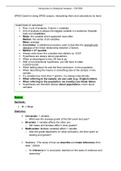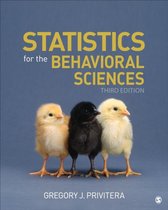Samenvatting
Introduction to Statistical Analysis (CM1005) - complete summary
- Instelling
- Erasmus Universiteit Rotterdam (EUR)
This summary summarizes all Statistics you need to know for the course Introduction to Statistical Analysis. It is very useful, as you can use it for your assignments and the SPSS exam. For the SPSS exam, it is very useful because everything you need to know is in this document. Furthermore, during...
[Meer zien]





